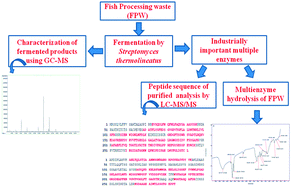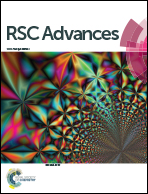Microbial assisted industrially important multiple enzymes from fish processing waste: purification, characterization and application for the simultaneous hydrolysis of lipid and protein molecules
Abstract
Fish processing waste (FPW) was evaluated as the substrate for the concomitant production of industrially important alkaline lipase and protease by Streptomyces thermolineatus for the hydrolysis of lipid and protein rich FPW. The FPW contributed to the effective growth of the organism and also aided the enzyme production. Media optimization was performed using response surface methodology for maximum enzyme production (lipase 402 U ml−1; protease 896 U ml−1). The enzymes were purified with ammonium sulphate precipitation, dialysis, and gel filtration chromatography and achieved a specific activity of lipase and protease of 903 and 2539 U mg−1 respectively, and purity of 8.6 and 10.8 fold respectively. The purified enzymes were stable over a wide range of temperatures (30–70 °C), pH (6.5–9.5), organic solvents and surfactants, with higher affinities for their substrates. Hydrolysis studies showed that the purified lipase and protease hydrolysed 76 and 86% of lipid and protein respectively. In conclusion, these enzymes have great potential for industrial applications especially treating waste containing multiple substrates.


 Please wait while we load your content...
Please wait while we load your content...